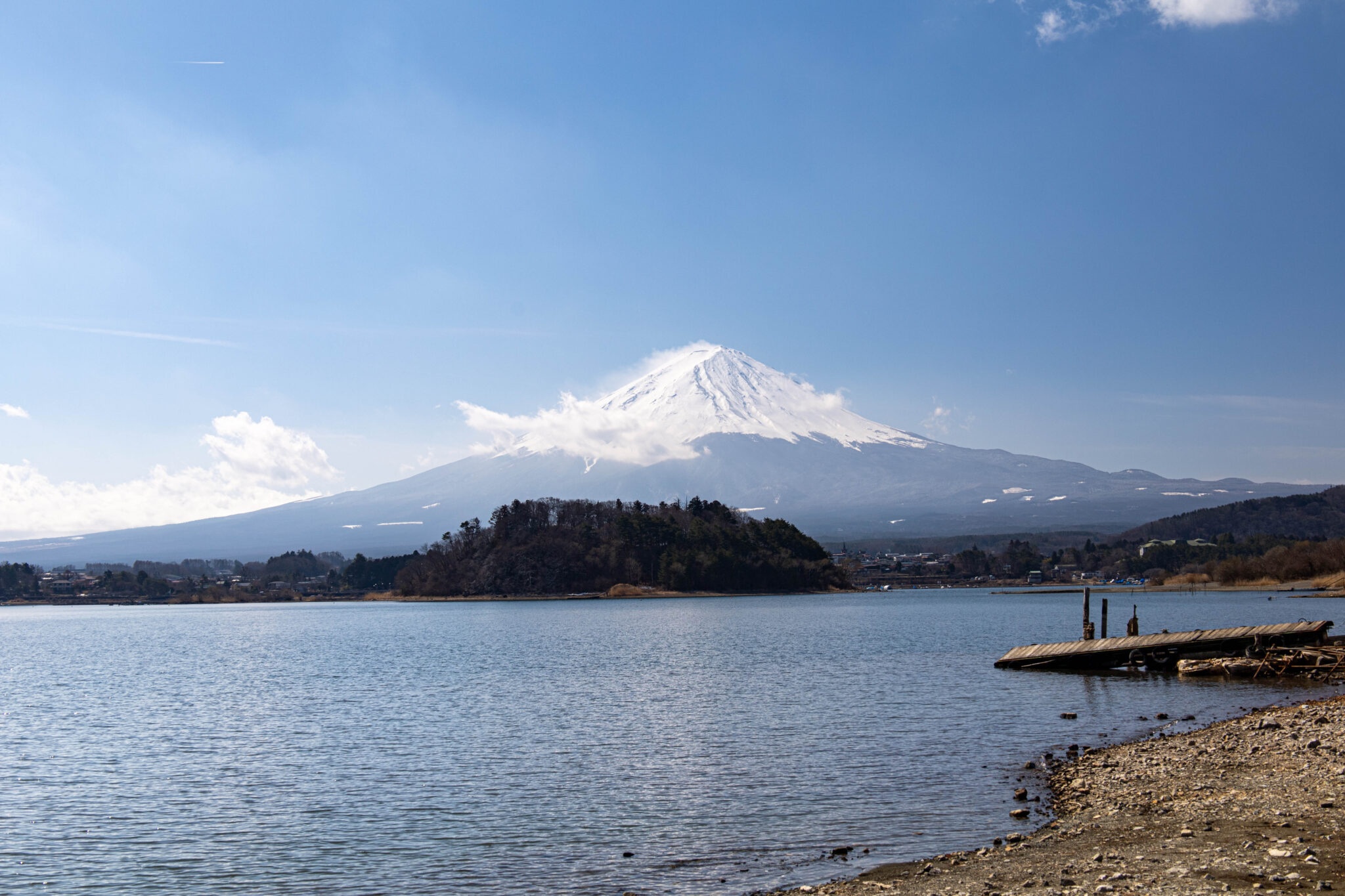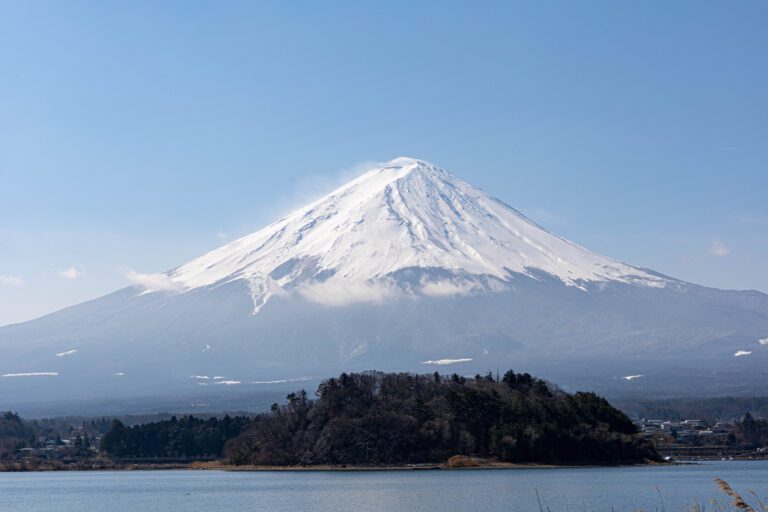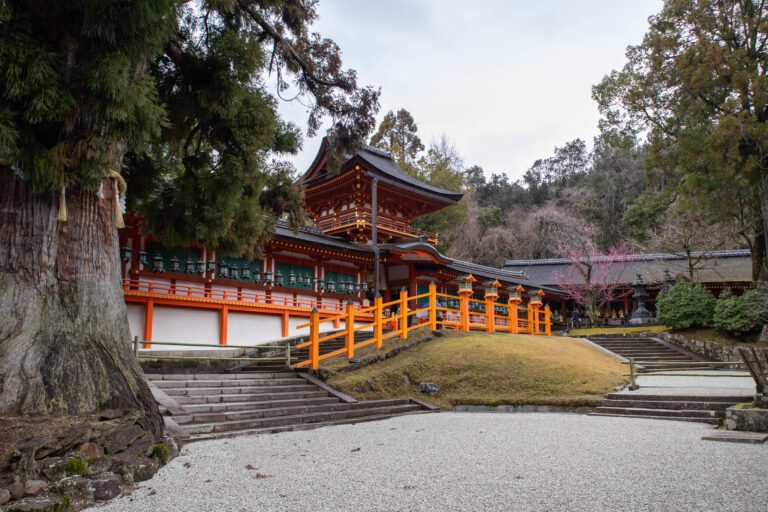2 Weeks in Japan Itinerary for First-Time Visitors
Planning to spend two weeks in Japan as a first-time visitor? I have the perfect 2 week Japan itinerary for you that will have you seeing all of the top destinations and give you plenty of opportunities to experience the beauty of Japan and its culture. With everything from bowing deer to digital art, delicious food, and enchanting architecture, Japan has something for everyone.
This two-week itinerary focuses on the classic Golden Route of Japan that follows the old Tokaido Road that connected Tokyo, Kyoto, Osaka, and Nara and adds on Hiroshima and Miyajima. While a lot is covered in these 14 days, there is minimal jumping between cities so you can maximize your time at each destination.
Japan is the perfect vacation for you if you’re looking to mix modern urban experiences with the deep history of Japan. It’s also a great destination if it’s your first time abroad as everything is so well organized it is easy to travel around and safe. To me, Japan felt like travelling on easy mode while still getting to experience a unique culture.
This post contains affiliate links, If you make a purchase through these links I will earn a commission at no extra cost to you. Thank you!
Planning your trip to Japan? Below are some places to stay, things to do, and more. Book ahead when planning your trip to Japan as availability goes fast. In places like Tokyo, you may need to book experiences 1 month in advance to secure a ticket. For internet, I used Japan Wireless, which has portable routers and eSIMs that you can purchase before arrival.
Best Tours and Experiences in Japan- Osaka Food Tour (Osaka is known as the nation’s kitchen!)
- Kyoto: Tea Ceremony at Jotokuji (these book up fast!)
- Kyoto: Exclusive Geisha Show in Gion with Tea Ceremony (meet a Maiko!)
- TeamLab Borderless, Tokyo (advance tickets are a must!)
- Shibuya Sky, Tokyo (try to get a ticket for sunset!)
- From Tokyo: Mt. Fuji Full-Day Sightseeing Trip (I took this tour!)
- Hotel the Flag Shinsaibashi, Osaka (Gorgeous rainfall shower, perfect location)
- Granbell Hotel, Kyoto (Favourite place I stayed, tatami mats, onsen)
- The Knot, Hiroshima (Walking distance to everything, large rooms with a view)
- Mitsui Garden Hotel Gotanda, Tokyo (Quieter neighbourhood on main metro line, onsen)
14 Day Japan Itinerary for First Time Visitors
Length: 2 partial flight days, 13 full days, 14 nights
Start and End Point: Start in Osaka, and end in Tokyo.
Cities: Osaka, Nara, Kyoto, Hiroshima, Tokyo, Kamakura
Hikes: Fushimi Inari, Mount Misen
Top 5 Experiences to Have in Japan
- Experience the spirituality of temples and bowing deer in Nara
- Walk through the thousands of torii gates at Fushimi Inari Shrine
- Feel the magnificence of Mount Fuji as it towers over you
- Explore Miyajima for the floating torii gate and views of the Seto Inland Sea
- Be dazzled (or overwhelmed) by the urban density of Tokyo
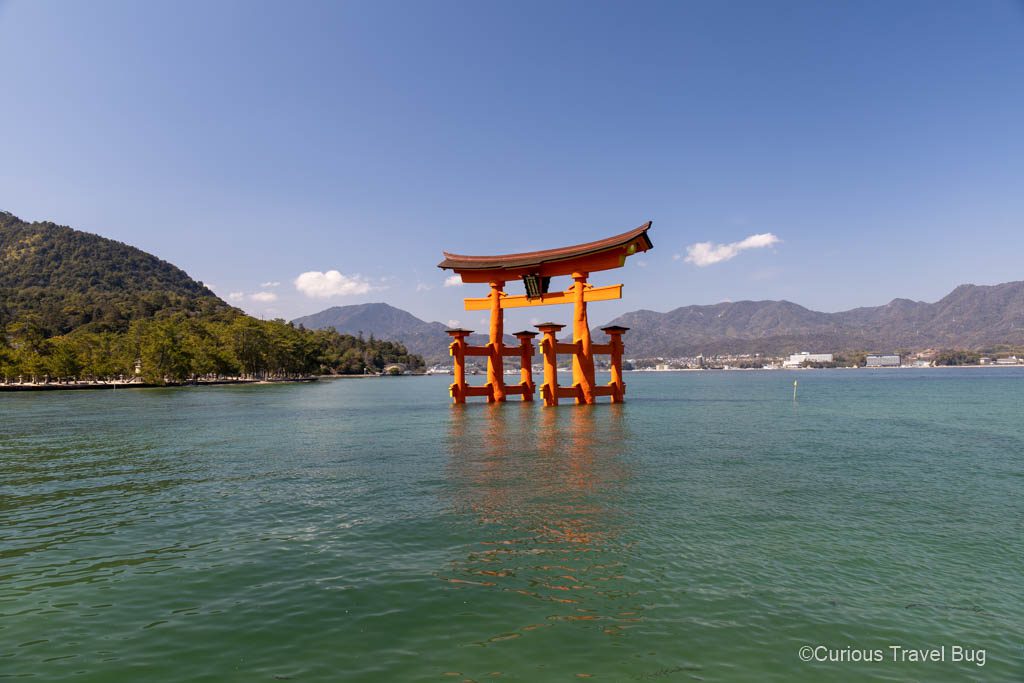
How to Get Around Japan
Japan is the perfect country to get around using trains. For this 2 week itinerary, buying individual tickets between long distances was more cost-effective than the Japan Rail Pass. I booked my Shinkansen between Kyoto and Hiroshima and Shinkansen between Hiroshima to Tokyo at the station about 30 minutes before I wanted to travel. Trains run frequently and there were plenty of seats.
If you want a seat with a chance to see Mount Fuji, you will have to purchase in advance as those are the ones that sell out quickly. To see Mount Fuji book the window seat that is part of the two-seat configuration, seat E in an ordinary car or seat D in a green car.
Luggage on Trains
Carry-on-sized luggage fits easily on the shinkansen on overhead racks. On inter-city travel like Kyoto to Osaka, there are also overhead racks for carry-on luggage. For large luggage on the Shinkansen, it is no longer accommodated without a prior booking. On inter-city trains, there is no space at all for large luggage and it isn’t allowed on buses.
I highly recommend forwarding large luggage through your hotel. Hotels are familiar with this process so you just need your next hotel’s address and phone number to be able to book this. Osaka to Kyoto has same-day luggage delivery and for further distances, it is either the next day or two days. It’s worth paying for as large luggage is difficult to navigate the crowds and stairs of train stations with them.
Getting Around Cities in Japan
Buses and trains work very well to navigate cities and short distances in Japan. There are some regional quirks. In Kyoto, you get on the bus and only tap-off and pay when you leave while in Hiroshima you must tap when you get on and off the bus. Taking the metro requires you to tap your card or ticket on entry and exit of the metro.
Buy a pre-paid IC Card on your first day in Japan. You can get these at metro or train stations at ticket vending machines. The vending machines do have an English option to make purchasing easy. You can use these cards to tap onto buses and metro stations across Japan so you don’t have to deal with change. The card you get depends on where you buy it, for example, ICOCA is the card in Osaka and Pasmo or Suica in Tokyo but either way, valid Nationwide. With an iPhone you can also use Suica, PASMO, or ICOCA with Apple Pay.
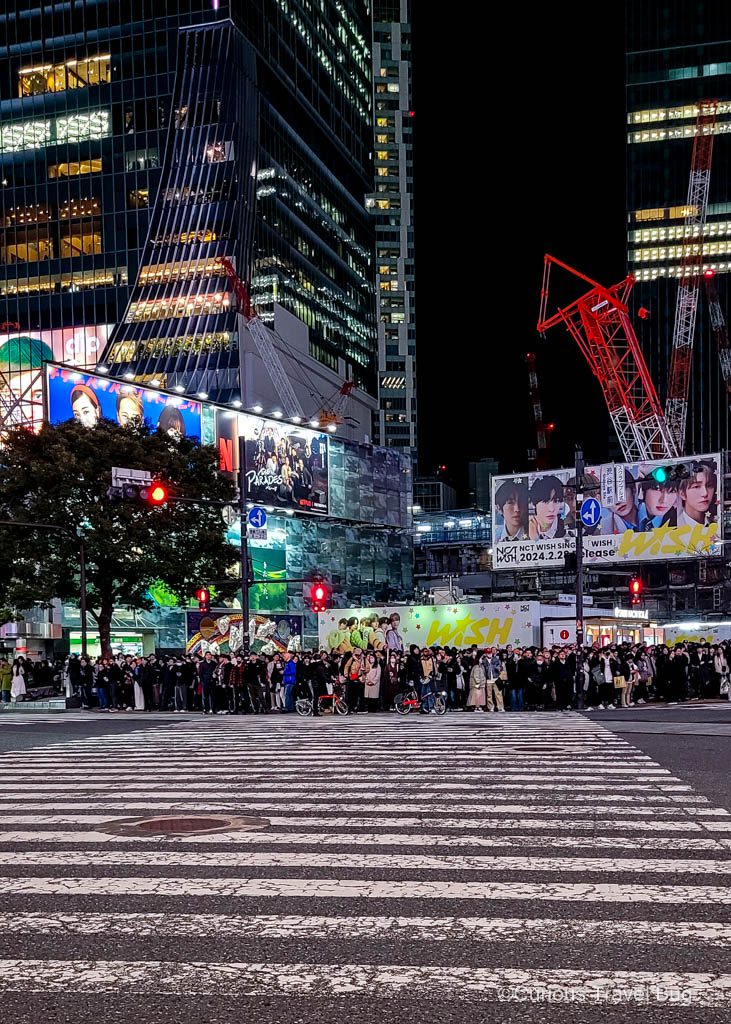
Internet in Japan
One of the most useful things for me while in Japan was having internet access on my phone. It was crucial for translating text and images as well as navigating the metro systems. While there are lots of free wi-fi connection points, it was always places that didn’t have it, that I needed internet the most.
If you have an unlocked cellphone that is compatible with eSims you can purchase this before visiting Japan so it’s ready when you land. Japan Wireless is a good option for eSims.
If you cannot use eSim’s, it is also possible to pre-purchase a physical SIM card or pocket Wifi routers. I used Japan Wireless and was happy with their service and how responsive they were to questions. You can have the SIM card or pocket Wifi shipped to the first hotel you are staying at so it’s ready when you check in or pick it up at the airport.
When to Visit Japan
The best time to visit Japan for the best weather is spring (late March to May) and autumn (late September to November). If you visit in spring, keep in mind that viewing cherry blossoms increases crowds and costs around the beginning of April. For autumn travel, viewing the changing fall leaves is a popular activity that tends to peak in November.
If you don’t mind the cold, winter (December-March) is a great time to visit to have fewer crowds. The summer months of July and August are not ideal weather as they are hot and humid. Try to avoid visiting Japan during Golden Week (end of April to the beginning of May) when there are many domestic tourists as they have the entire week off of work and school.
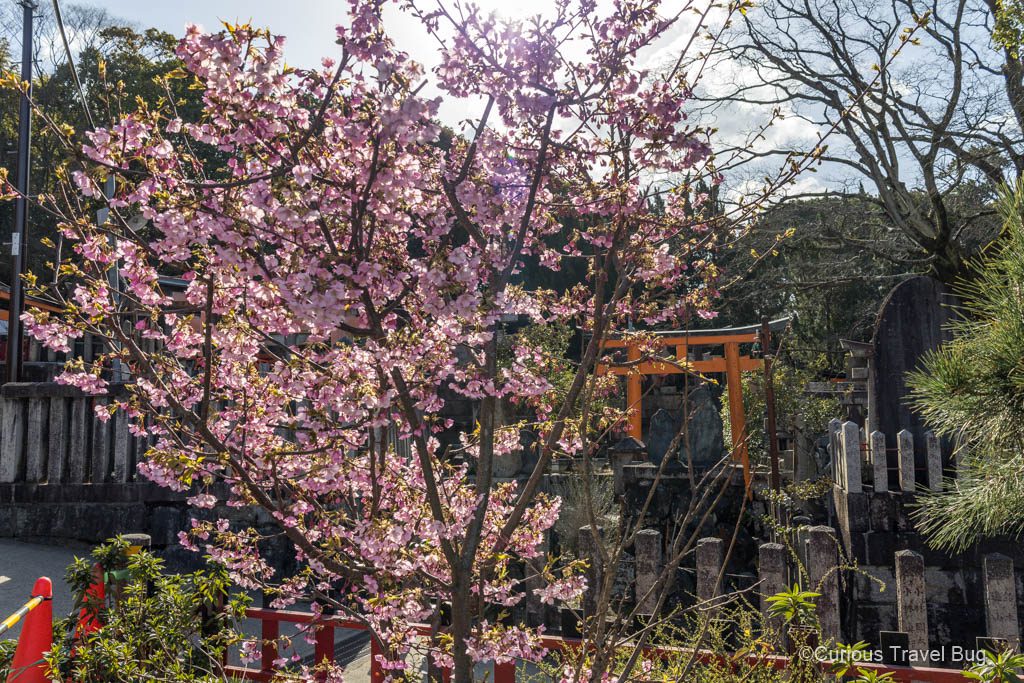
Two Weeks in Japan Itinerary
This 14 day Japan itinerary has you starting in Osaka and ending in Tokyo. If you are not able to purchase flights with a different beginning and end you have two options. Fly roundtrip into Osaka and spend time in Osaka at the beginning and save Kyoto for the end of your trip. The second option is to fly roundtrip into Tokyo and split your Tokyo time in half for the beginning and end of this itinerary.
Day 1-3: Osaka with a Day Trip to Nara
🌃# Nights in Osaka: 2
🛏️Stayed at: Hotel the Flag Shinsaibashi
🚅Transportation to Osaka: Arrive at Kansai International (KIX) Airport, take Limited Express Rapi:t to Namba Station and then Metro to Shinsaibashi Station
With two days in Osaka, I split my time into one day dedicated to visiting Nara and one day to the sights of Osaka. You can also visit Nara from Kyoto as it is about the same distance but Osaka tends to be cheaper for hotels. Osaka is a charming city that I wish I had dedicated more time to.
Day 1: Arriving to Osaka
Your first day in Japan is likely just a transit day. In my case, I arrived at Osaka Kansai Airport after a fourteen-hour flight with a transfer in Tokyo. I didn’t arrive at my hotel until almost midnight. It was so late that while I’m sure some bars would be open, I had a protein bar and went to sleep. If you arrive earlier than I did, grab some dinner and relax for the evening to get ready for your first full day in Japan tomorrow!
Day 2: Nara Day Trip
On your first day in Japan, hop on a local train travel 40 minutes to Nara. As a former capital of Japan, Nara is full of significant temples and is known for its population of deer that will bow to you for treats.
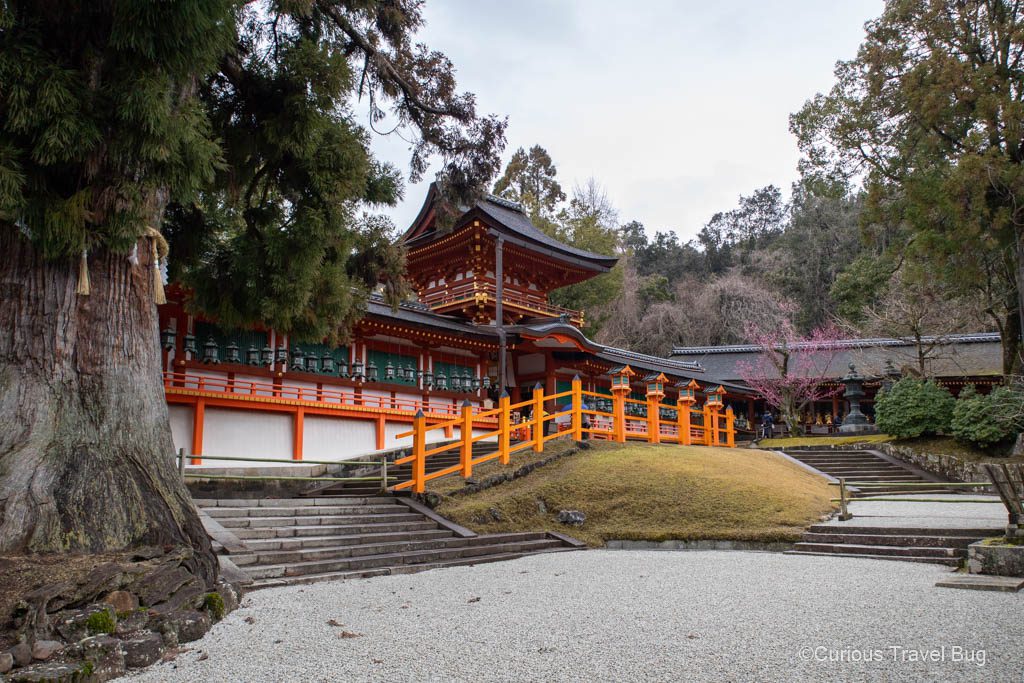
You can easily spend a day in Nara wandering around the different temples. Start your exploration of Nara with a visit to Kofuku-ji with its large pagoda. Afterwards, head to Todai-ji, a Buddhist temple famous for the Great Buddha that it houses. Walking through the massive wooden Namdaimon Gate towards Todai-ji you should spot many of the wild deer that Nara is famous for. Close to the large bell in the Todai-ji complex, there are some convenient restaurants for lunch. I ate at Rokumeien and had delicious udon soup. There are both meat and vegan options. Following lunch, head to Kasuga-taisha, a Shinto shrine known for its bronze lanterns.
End your first day back in Osaka, exploring Dotonbori at night and having okonomiyaki for dinner or joining a food tour.
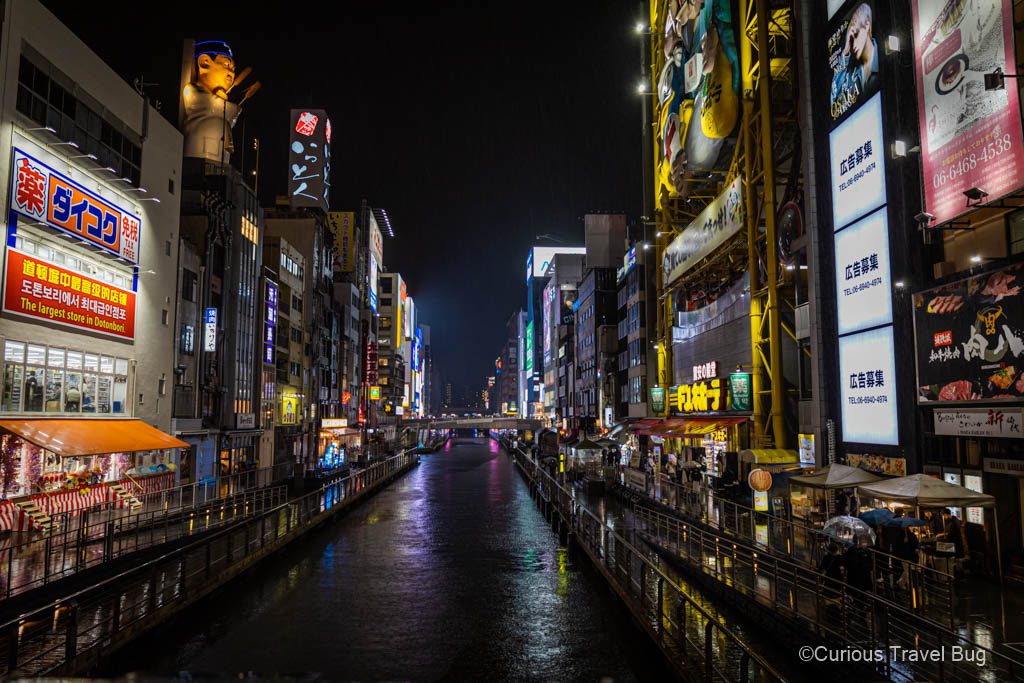
Day 3: Explore Osaka and Transit to Kyoto
Today you will be transiting to Kyoto so when you check out of your hotel, have them ship your large luggage to Kyoto with same-day shipping and store your carry-on sized luggage for the day.
Start your day exploring Osaka Castle. This area is nice to walk around and while the castle is a reproduction, it is nice to see the outside. I didn’t go inside because the line-ups were quite long. If you are visiting in March, it’s plum blossom season and you should check out the large plum grove where there are many varieties with blossoms in all shades of pink to white. After spending the morning at Osaka Castle, head back to the Dotonbori area. It’s very different looking during the daytime. There are many places here to grab some lunch or a snack. Walk through this area towards Namba Yasaka Shrine, known for its large lion-shaped stage.
After you’ve gotten your fill of Osaka, pick up your luggage and take local transit to Kyoto and check into your next hotel.
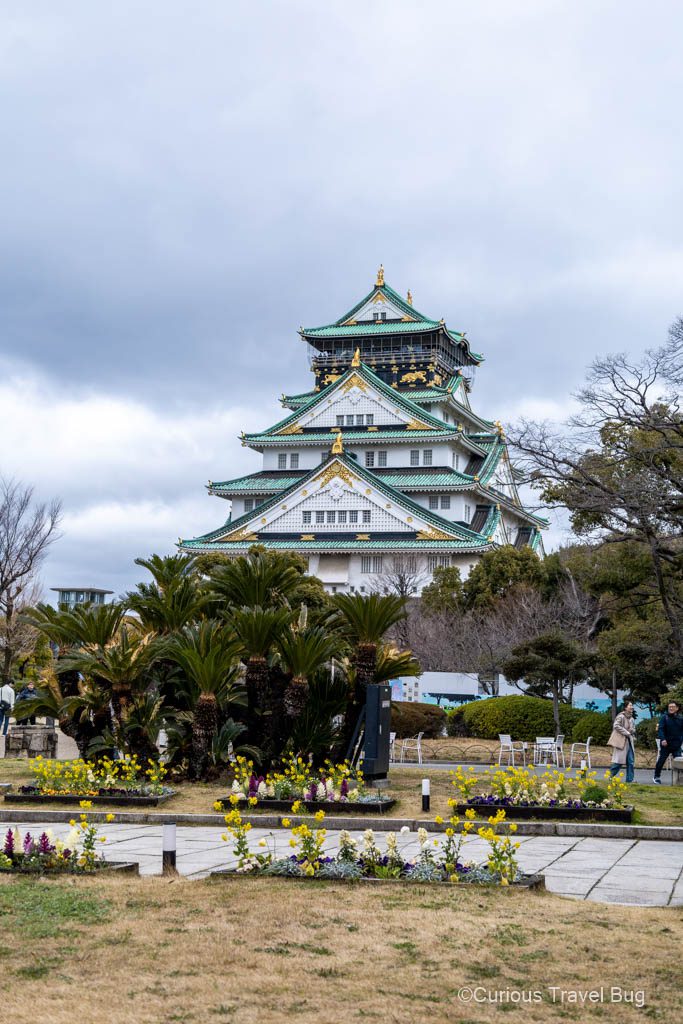
Day 4-7: Kyoto
🌃# Nights in Kyoto: 4
🛏️Stayed at: Granbell Hotel
🚅Transportation to Kyoto: From Osaka, take local trains to Kyoto. The Tokaido-Sanyo Line will take you between Shin-Osaka and Kyoto Station. If you are staying in the Gion District, from Yodoyabashi Station in Osaka take the Keihan Main Line to Gion-Shijo Station in Kyoto, it’s about 50 minutes.
Kyoto ended up being my favourite city on this itinerary. Even though some people stay in Osaka and do day trips to Kyoto, by basing yourself in Kyoto you can take advantage of your jetlag and get up and go early in the morning before it gets busy. Because this is the beginning of the trip, there’s a good chance you will be up by 5 am with jetlag if you’re travelling from the Americas. I enjoyed the atmosphere of Kyoto and by staying in the Gion District, you will be perfectly placed to explore all the top sights of Kyoto.
Day 4: Hiking Fushimi Inari and Visiting Uji
Start your day early at Fushimi Inari to beat the crowds. It’s an unusual hike as you pass through thousands of vermilion torii gates. Gaps in the torii gates offer views of Kyoto and cemeteries with fox statues. There is also a tea shop and souvenir shop halfway up so bring some cash. I spent about 2 hours here hiking.
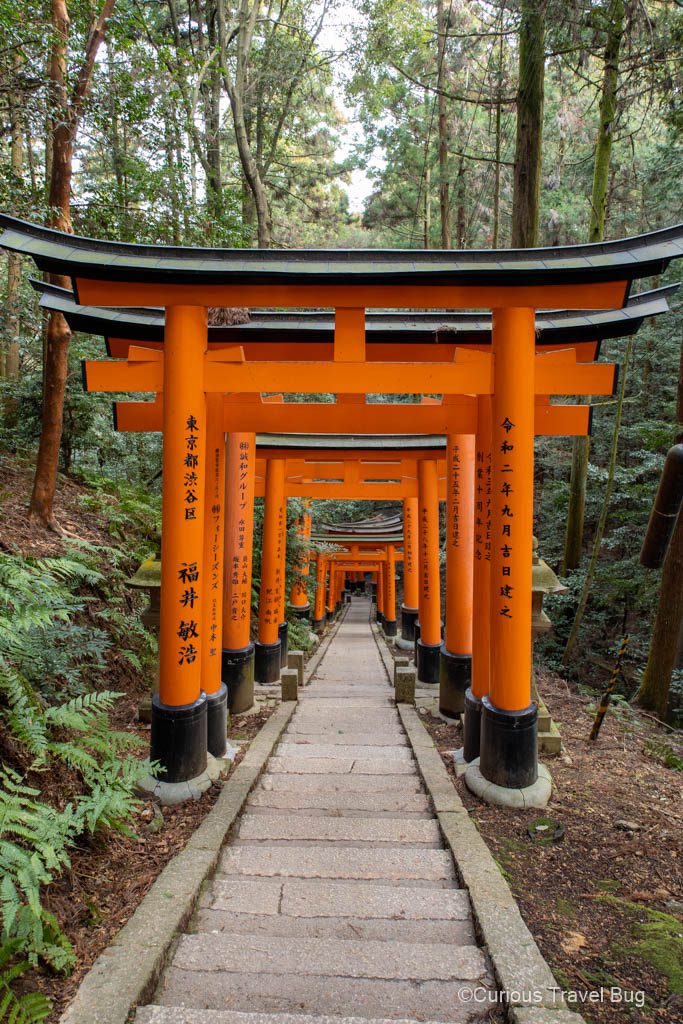
After Fushimi Inari, you will have time which you can use to explore Kyoto, but I chose to add a visit to nearby Uji. Uji is famous for being the birthplace of green tea and for the Byodo-in temple, which is featured on the 10 yen coin. Sitting above a match-green pond, beautiful Phoenix Hall is well worth a visit. The museum here has the Praying Bodhisattva on Clouds statues and bronze Phoenixes, which were my favourite art pieces I saw in Japan. Have lunch in Uji, I ate at Itoh Kyuemon teahouse and would recommend it.
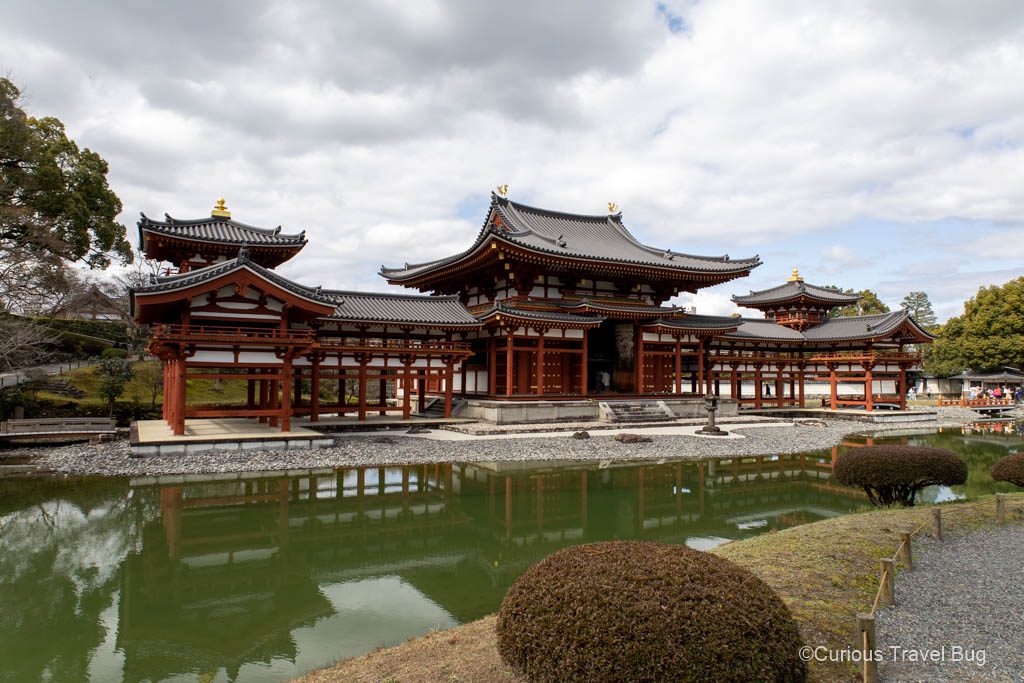
After browsing the green tea shops in Uji, return to spend the evening in Kyoto wandering the Gion District. I ate at Mimikou where I had delicious vegan curry udon and was perfectly positioned to explore Yasaka Shrine at night.
Day 5: Exploring Higashiyama and the Philosopher’s Path
Today is based around visiting temples and shrines of Kyoto so it’s a good idea to start early to avoid crowds. While this day is heavy on walking, you can get buses instead for some of it.
Start by exploring the streets of Gion to get iconic views of Kyoto like Sannezaka Road and Yasaka Pagoda from Ninenzaka. I was there around 7 am and it was so peaceful to wander here without battling the crowds I saw later.

Head towards Kiyomizu-dera Temple. Sitting on a hillside, this temple has fantastic views of Kyoto. I spent about 1.5 hours at Kiyomizu-dera exploring the temple and walking some of the paths around it.

After Kiyomizu-dera, walk towards Yasaka Shrine and Maruyama Park. I didn’t spend too much time at Yasaka Shrine as I had seen it the night before. Maruyama Park is a nice area to stroll and if you are into Pokemon, there is a Pokemon manhole cover here.
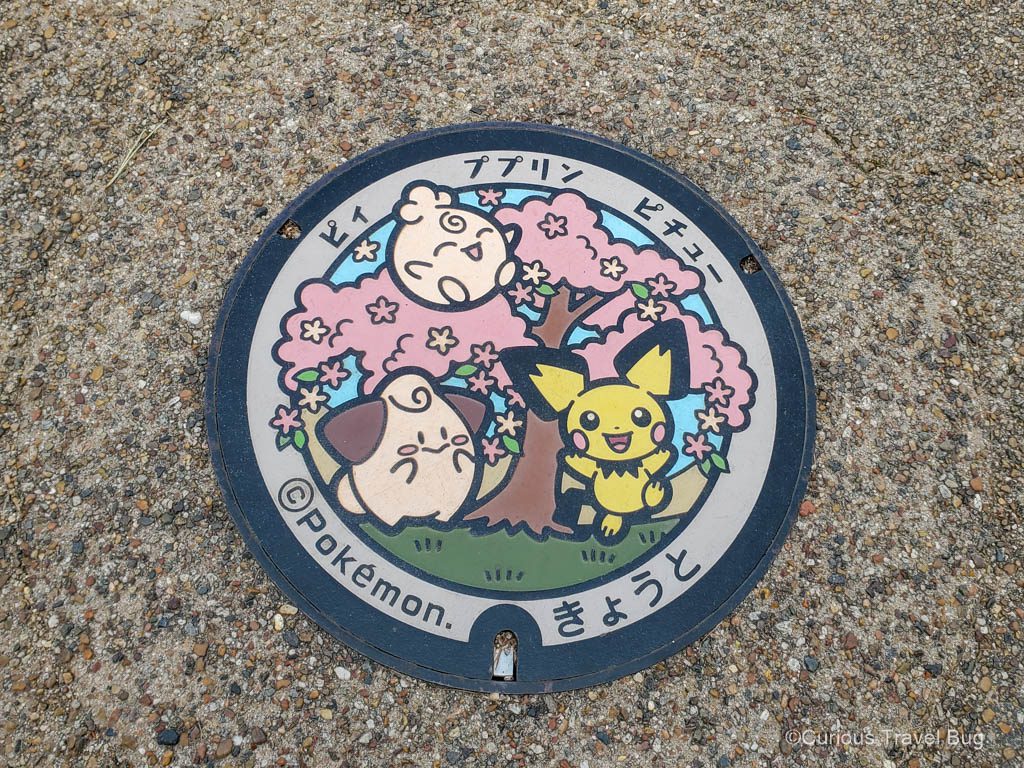
Chion-in Temple is next to Maruyama Park and is not to be missed. This one caught me by surprise as I didn’t expect the massive stone steps that led up to it. These steps are featured in the movie The Last Samurai. It’s worth paying the money to go into the temple to experience the nightingale floor that creaks when you walk on it and to see the beautiful Hojo Teien garden.
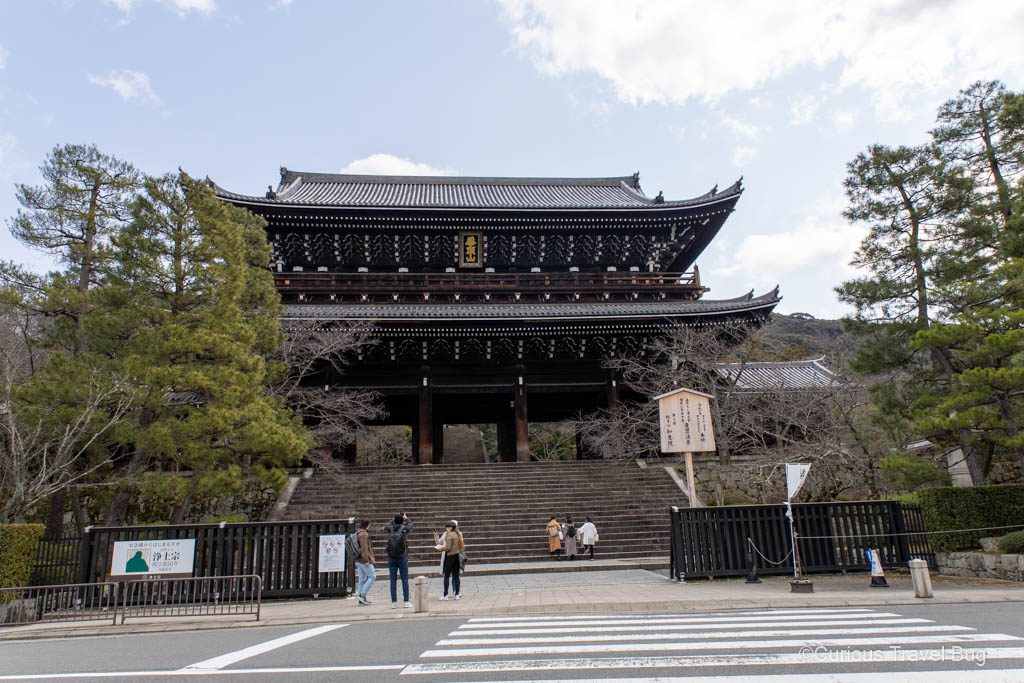
I just had a quick lunch from a convenience store on my walk to Nanzen-ji Temple. On the walk you can see the Keage Incline, which is famous for its cherry blossoms. At Nanzen-ji Temple you can also see the Suirokaku Aqueduct.
After, head to the start of the Philosopher’s Path. This path follows next to a stream and is a beautiful walk that connects ends near Ginkaku-ji. There are many possible stops here including shops and temples. My favourite stop was Ōtoyo Shrine which has multiple animal statues and a nice goshuin that includes a stamp of mice.

Ginkaku-ji Temple is worth a stop to see the Silver Pavilion and the beautiful sand garden containing the Kogetsudai sculpture shaped like Mount Fuji. Afterwards, catch a bus back to get dinner.
I ate at Kyoto Engine Ramen and highly recommend it.
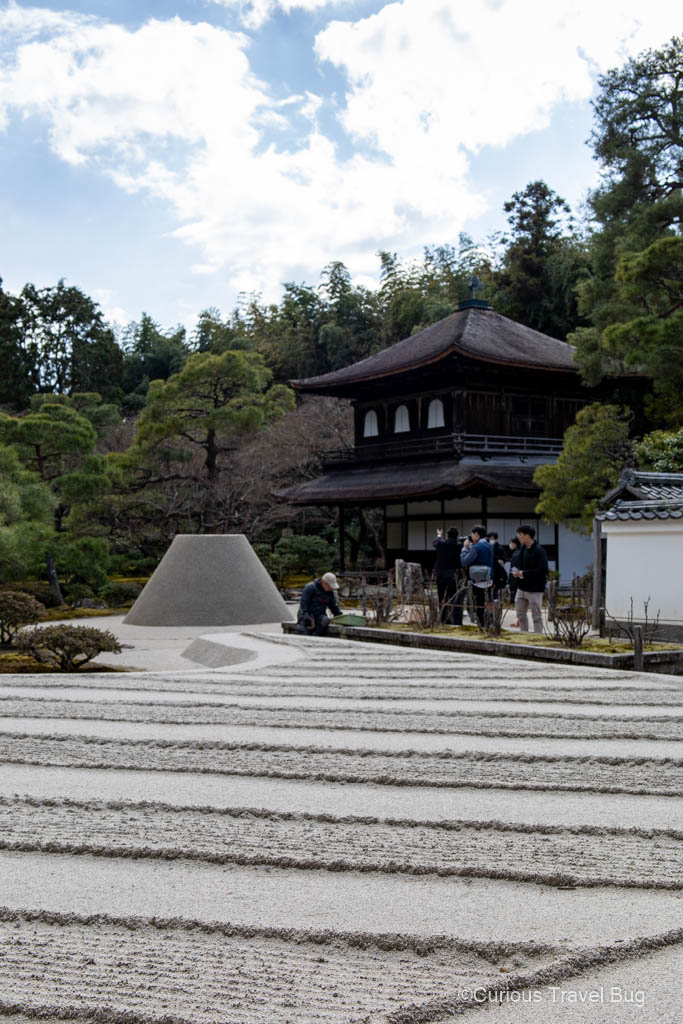
Day 6: Arashiyama and Kinkaku-ji
Arashiyama is one of the most popular areas of Kyoto to visit so I was there by 8am to try to escape the crowds. When I arrived it was very peaceful to walk through the bamboo forest and wander the streets. Walking towards Nison-in Temple there are some nice shops including Mingei Teika which has a fantastic selection of Japanese incense.
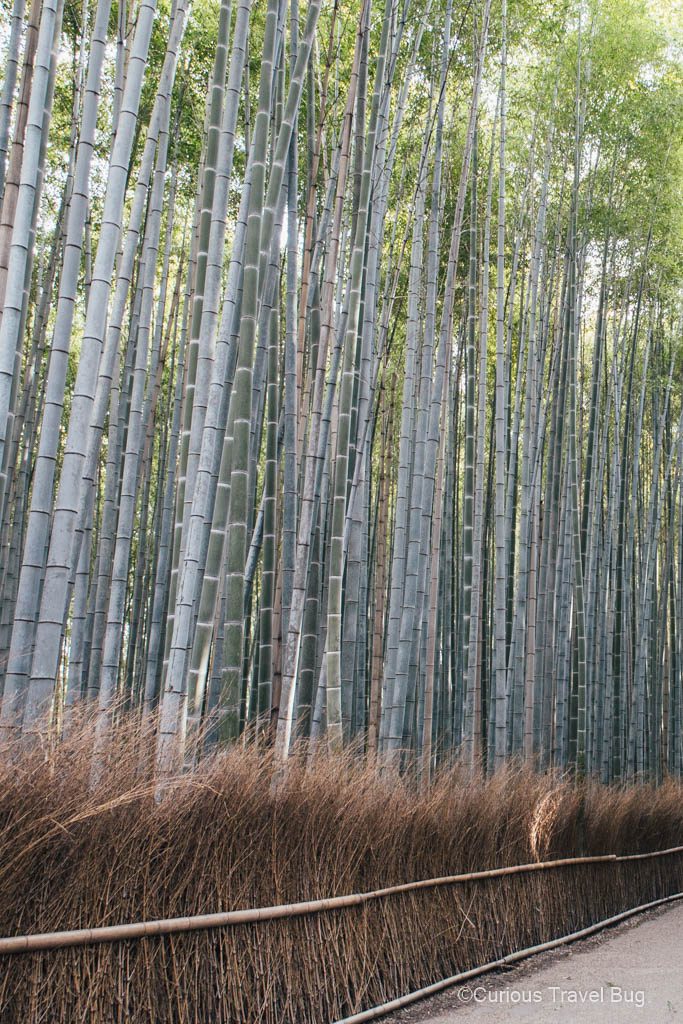
After exploring the bamboo forests, head to Tenryu-ji Temple. This temple has a fantastic botanical garden and great views of the bamboo forest. My only regret was not booking lunch at Tenryu-ji to experience Zen vegetarian cuisine.

Walk across Togetsukyo Bridge for views of Katsura River and Arashiyama Mountain. Visit Arashiyama Monkey Park. Visiting the park does require quite a walk up the mountain. I spent about an hour here viewing the Japanese Macaques here, it was a highlight of the day for me.
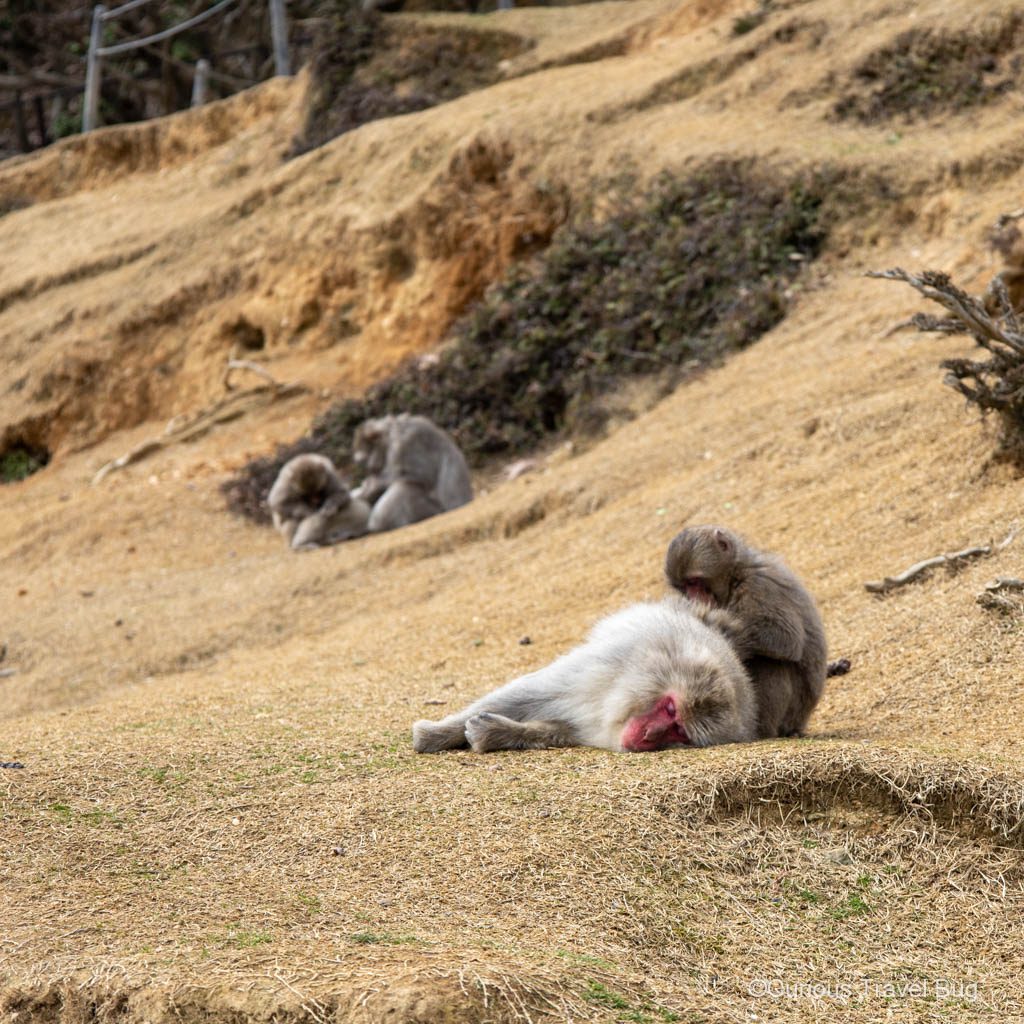
When I was done at Monkey Park, Arashiyama was extremely packed with people. I would not have wanted to try and find lunch or navigate the streets. I decided to get a bus to Kinkaku-ji instead of spending more time in Arashiyama.
Kinkaku-ji is one of the most popular temples to visit in Kyoto so it will likely be quite busy. For me it was probably the least exciting temple in Kyoto because you have to move along the route in one direction as it is quite busy.
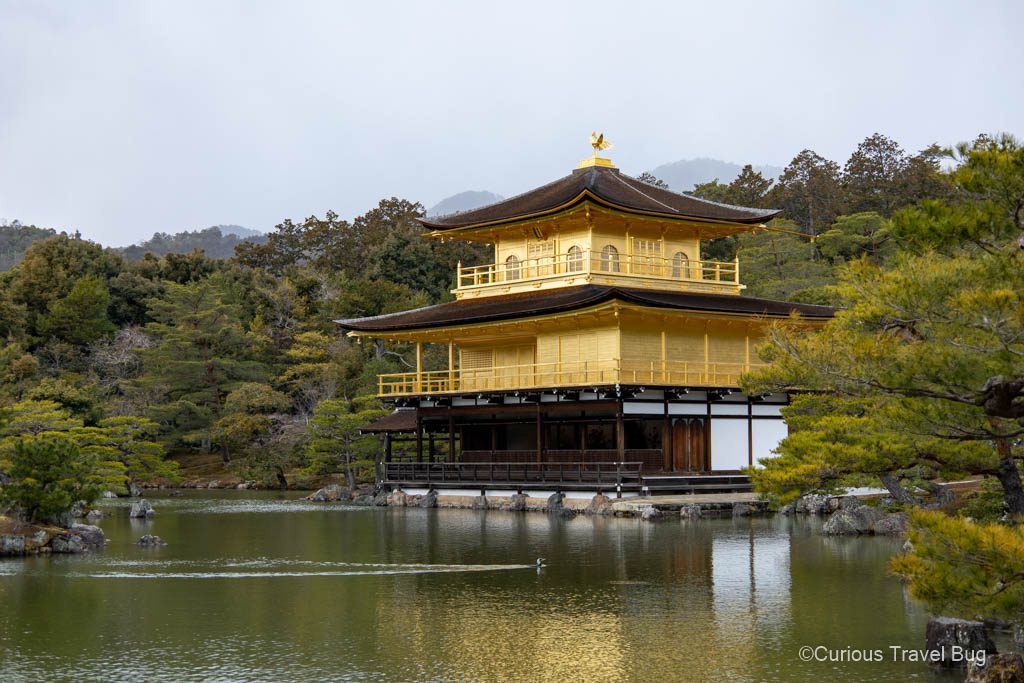
After Kinkaku-ji I grabbed some lunch at the nearby convenience store and then walked towards Kitano Tenmangu Shrine. This shrine is known for its plum blossoms and if you visit during February or March you can see plum blossoms around the shrine and pay entry to get into their plum gardens.
End the day with dinner closer to your hotel. I ended up eating at Kyoto Engine Ramen because it was a weekend and everywhere had a 1 hour+ wait without a reservation. Luckily, Engine Ramen has a fast turnover so I got a seat quickly.
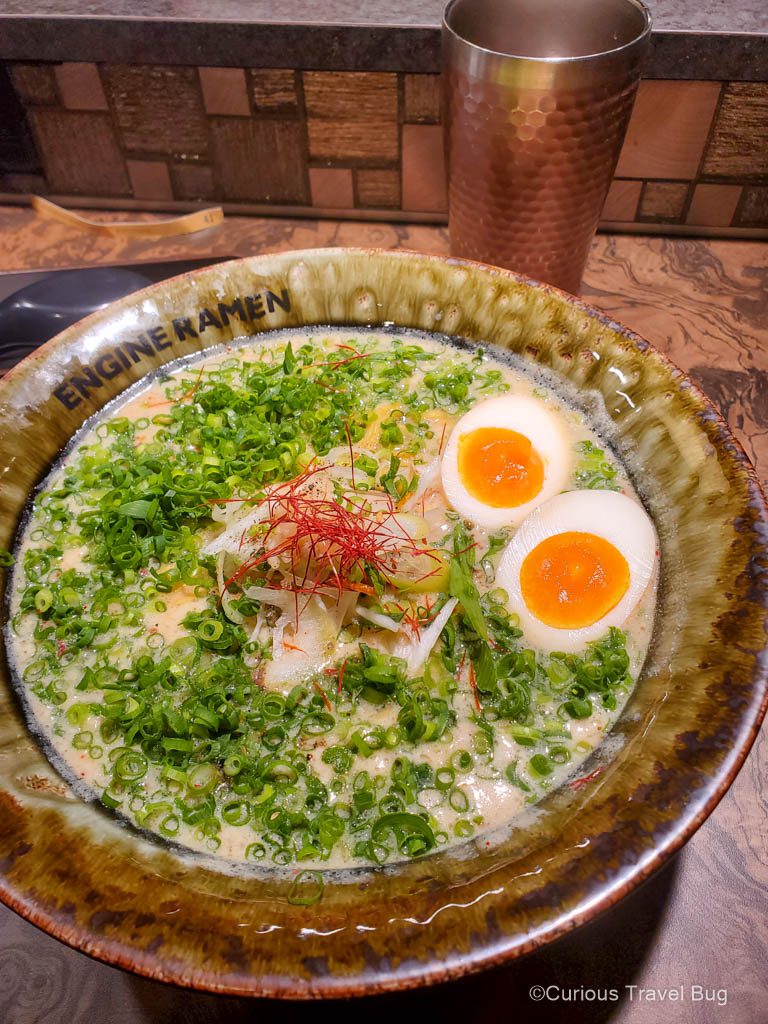
Day 7: Kyoto Imperial Palace and Transit to Hiroshima
Pack up your suitcases and have your hotel forward your luggage to Hiroshima or Tokyo if you won’t need anything for a few days. Store your smaller luggage with them until later on.
Shops in Kyoto open around 10 am. I enjoyed shopping in Kyoto a lot more than in Tokyo as I found stores were less crowded. Check out Hands, which is a department store that sells a little bit of everything.
After spending some time shopping, if you are looking for interesting goshuin stamps, grab a donut from Koe Donuts (delicious!) and then head to Hozo-ji Temple. This temple is known for its skull goshuin but I was there when they were offering a limited edition Nirvana goshuin as they had the Nirvana scroll on display that weekend.

Afterwards, I recommend joining a tea ceremony. It’s my only true regret in Kyoto that I didn’t book one before visiting. It’s also possible to join a tea ceremony with a Geisha.
If you have time left and aren’t in a rush to get to Hiroshima, take a bus to Kyoto Imperial Palace. The Imperial Palace Grounds are massive. It’s free to get inside and the gardens are worth it.
Take a bus back to your hotel to pick up any stored luggage and then get the train to Kyoto Station where you can get the Shinkansen to Hiroshima. I also recommend getting a bento box here to have dinner on the train. Hopefully, your experience goes a little smoother than mine as the train was delayed for almost an hour and the station was very crowded.
Day 8-9: Hiroshima with a Day Trip to Miyajima
🌃# Nights in Hiroshima: 2
🛏️Stayed at: The Knot Hotel
🚅Transportation to Hiroshima: Take the Shinkansen from Kyoto Station to Hiroshima Station, approximately 2 hours. From Hiroshima Station to your hotel, there are bus and streetcar routes.
Hiroshima was an unexpected highlight of this itinerary. While many people visit Hiroshima as a day trip to see the Peace Memorial Park and museum, spending a couple of nights in Hiroshima gives you the chance to explore the city. Hiroshima is quite charming and you are perfectly placed to explore nearby Miyajima.
Day 8: Day Trip to Miyajima and Hiking Mount Misen
To visit Miyajima, I recommend taking the Hiroshima World Heritage River Cruise which leaves from near the Peace Park and Atomic Dome. It is more expensive but it saves time getting you there and it takes a beautiful route under the bridges of Hiroshima and around the islands.
In Miyajima, if you do not feel like hiking, start your day by taking the ropeway up and back and then exploring the temples and following the below itinerary.
In Miyajima, check out the Itsukushima Shrine torii gate as it will likely be at high tide when you arrive. Then, visit Itsukushima Shrine. This shrine has perfect views of the torii gate as well as the five story pagoda. Built over the water, this is one of the most unique shrines you will visit on this trip to Japan.
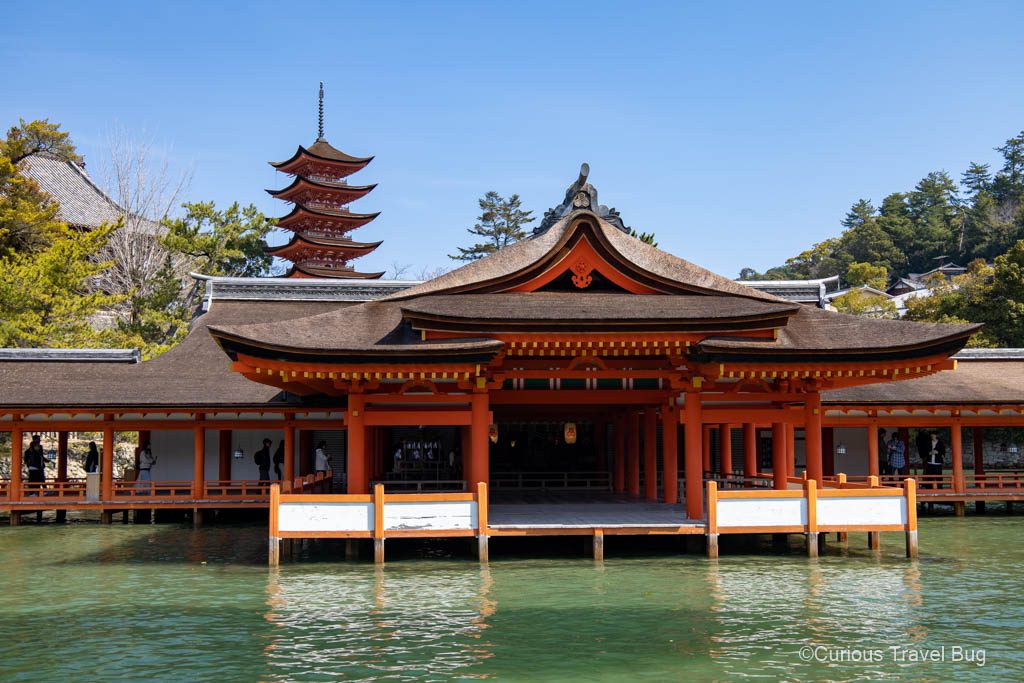
Afterwards, head along the shore and grab some lunch. I ate at Cafe Lente and loved the yummy risotto and the views of the water.
Walk along the lantern-lined path towards Omoto Park and then Daisho-in Temple.
Daisho-in Temple is not to be missed. This temple took me about 1 hour to explore as there is a lot to see. One of the highlights for me was seeing all of the statues and artwork it had. There was also a corridor in pitch-blackness that you could walk through that ran under the Main Hall.
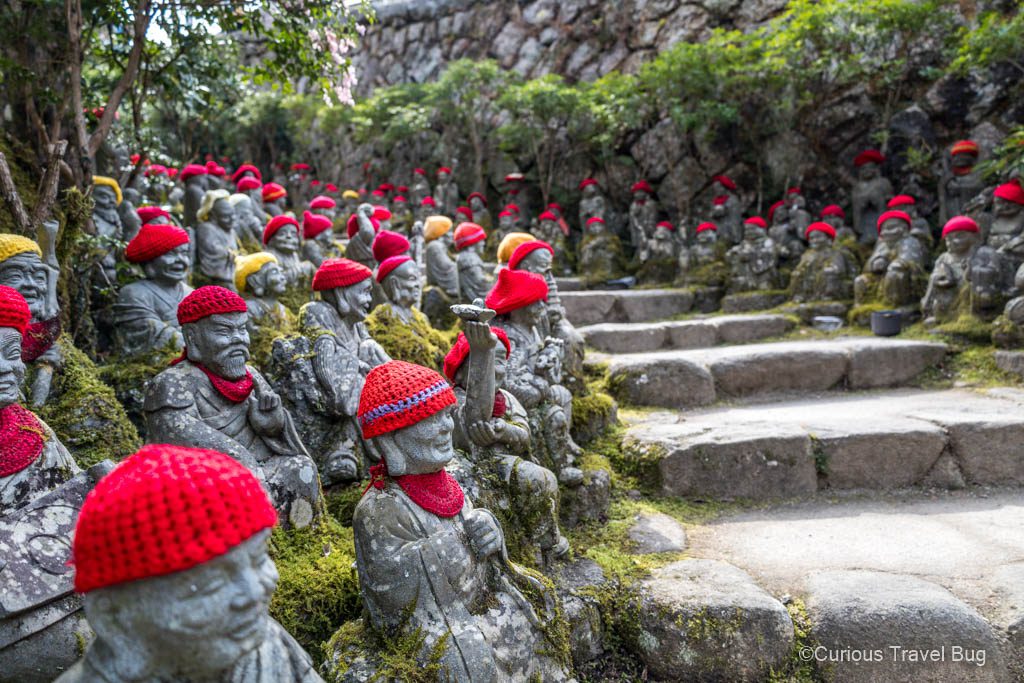
After Daisho-in Temple, head up Mount Misen on the Daishoin Course towards Nio Gate. It took me about an hour of constant walking up stairs to reach the Nio Gate. From there you are close to the Mount Misen Observatory which offers great views of the Seto Inland Sea.
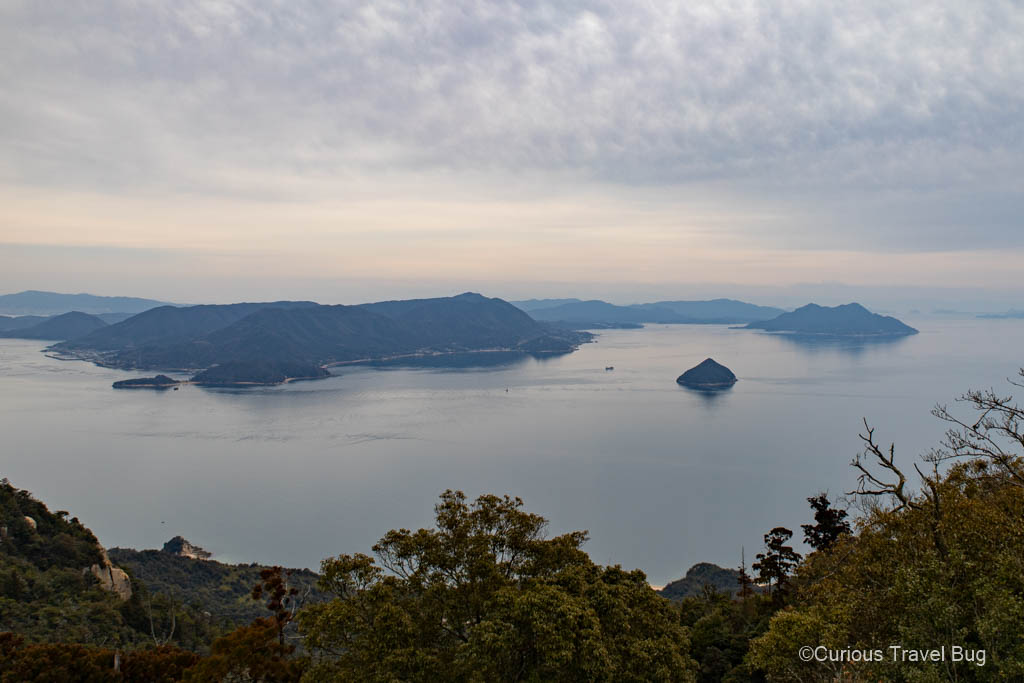
You can either take the ropeway down or walk down through Momijidana Park. The walk down takes about an hour but is much gentler than the Dashoin Course. There are also tons of deer. If they hear even the slightest rustle of a snack they will approach you.
I spent more time in Miyajima afterwards waiting for the tide to go out completely and to see the Itsukushima Shrine torii gate at night. The island seems to close up around 5 pm but the regular ferry runs until about 10 pm.
Head by regular ferry and train into Hiroshima and have dinner. Hiroshima is known for its Hiroshima-style okonomiyaki, Jirokichi is a great place to try them out.
Day 9: Exploring Hiroshima and Transit to Tokyo
Have your large luggage transferred to your Tokyo hotel and store small luggage at your hotel.
Start your day in Hiroshima by visiting the Hiroshima Peace Memorial Museum and then explore the Peace Memorial Park to see the eternal flame as well as the Atomic Bomb Dome.
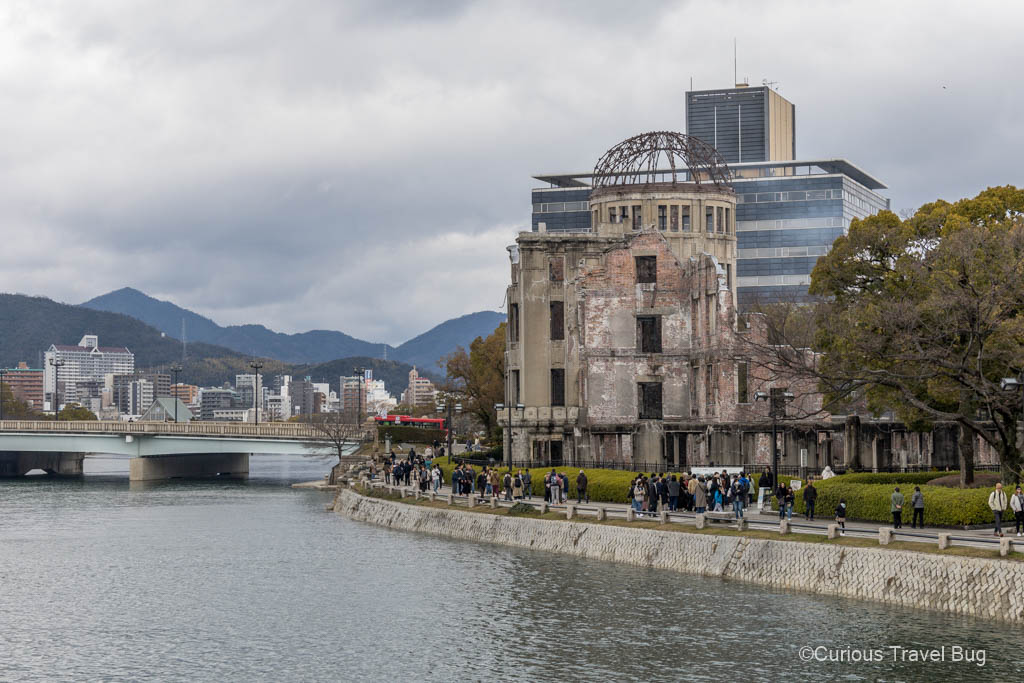
Walk over to Hiroshima Castle, also known as the Carp Castle. It’s interesting to walk the grounds and see some trees that survived the atomic bombing. Go over to Shukkeien Garden, the highlight of my day in Hiroshima. The garden is set around a small lake full of koi and turtles. Originally designed 400 years ago, it always has something to view.

Take a bus back to your hotel to pick up your luggage and head to Hiroshima Station. The train to Tokyo is long so I recommend buying some snacks or a bento box to have a full meal on the train.
In Tokyo, it’s worth checking out Tokyo Station while you are there. Character Street is full of shops with everything from a Pokemon store with exclusive train conductor Pikachu, to a Studio Ghibli Store, and more. There’s a Tokyo Banana store if you want to try out the famous treat, which is surprisingly, not vegetarian.
Ramen Street is a great place to get some food before you head to your hotel. I ate at T’s Tantan, which was delicious but difficult to find as it is in the train station after scanning your transit card.
Day 10-15: Tokyo with Day Trips to Mount Fuji and Kamakura
🌃# Nights in Tokyo: 7
🛏️Stayed at: Mitsui Garden Hotel Gotanda
🚅Transportation to Tokyo: Take the Shinkansen from Hiroshima Station to Shinagawa or Tokyo Station depending on your hotel location, approximately 4 hours. A hotel on the Yamanote Metro Line makes it easiest to get around.
Spending five full days in Tokyo will give you a chance to explore the main sights, have plenty of shopping time, and see some of the top day trips from Tokyo. I did this at a pretty leisurely pace because Tokyo is big and it does take quite a bit of time to get across the city or walking through crowds.
From Tokyo, I had day trips to Mount Fuji and Kamakura, both of which I highly recommend, but it is also possible to visit Nikko or Yokohama as day trips depending on your interests.
I visited Ueno Park, Tokyo Skytree, and the Imperial Palace but I dropped them from this itinerary because I found them underwhelming.
Day 10: Senso-Ji Temple and Shopping in Tokyo
Start your day visiting Senso-ji Temple in Asakusa. This temple gets very busy and the streets are narrow so prepare for crowds. Walk from Kaminarimon Gate down Nakamise-dori Street to get to Senso-ji. There are lots of street food options here if you want some breakfast or a snack. Asakusa is close to Kappabashi Street which is the place to shop for kitchen goods like Japanese knives.
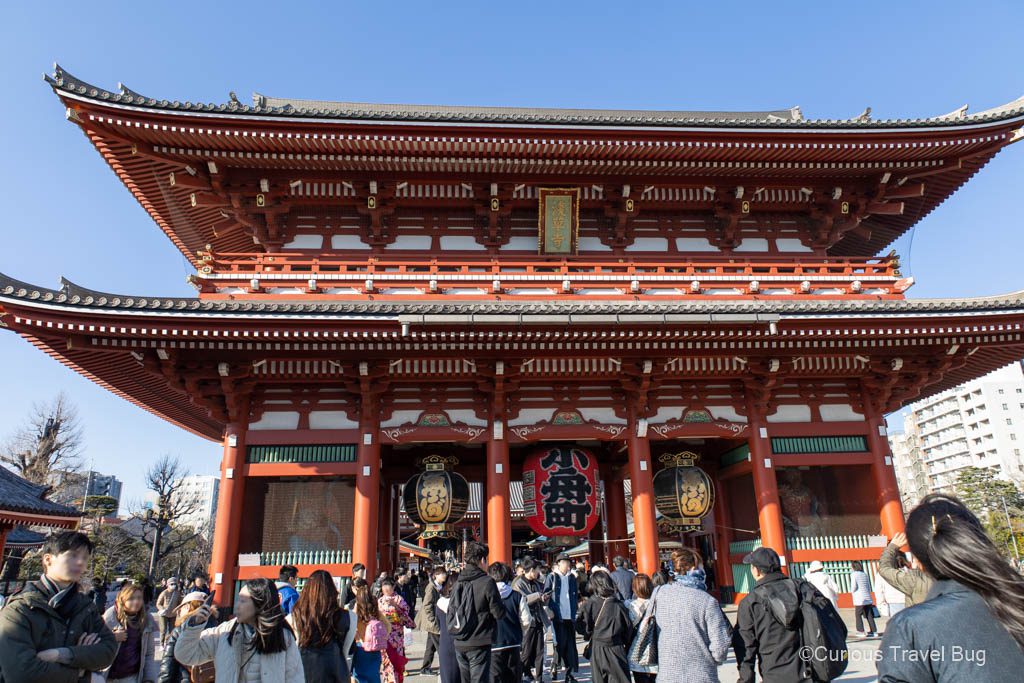
For the afternoon, book in at one of the famous character cafes like Pokemon, Kirby, or Cinnamaroll and then do some shopping.
Tokyo is a great place for stocking up on souvenirs from places like Don Quixote which has a little bit of everything, Hands for household goods and stationary, Uniqlo for clothing, Daiso for 100 yen goods, or character shops. It always takes longer than expected especially with crowds and sometimes lineups so it’s worth scheduling some time for it. I’m recommending doing it at the beginning of your time in Tokyo so if something is difficult to find you still have time to find it later.
Day 11: Day Trip to Mount Fuji
While you can visit Mount Fuji independently, I highly suggest joining a bus tour. Independently you will not be able to visit as many places and you will also have to deal with poor transit options. Buses are often booked up and local transit can be very crowded to the point of having multiple buses pass you by.
I joined this bus tour because I wanted to see the area around Lake Kawaguchiko but there are also bus tours to Hakone.
You start the tour with a visit to Lake Kawaguchiko, the most famous of the Fuji Five Lakes. I was lucky to have clear views of Mount Fuji. After a stop at Chureito Pagoda to see iconic views of Mount Fuji. The lunch break offers many street food options in Oshino Hakkai with its springs from Mount Fuji. Finally, you end the tour with closer views of Mount Fuji at either the highest accessible station (5th station) or 1st station during winter. You can read my full account of the Mount Fuji day trip here.
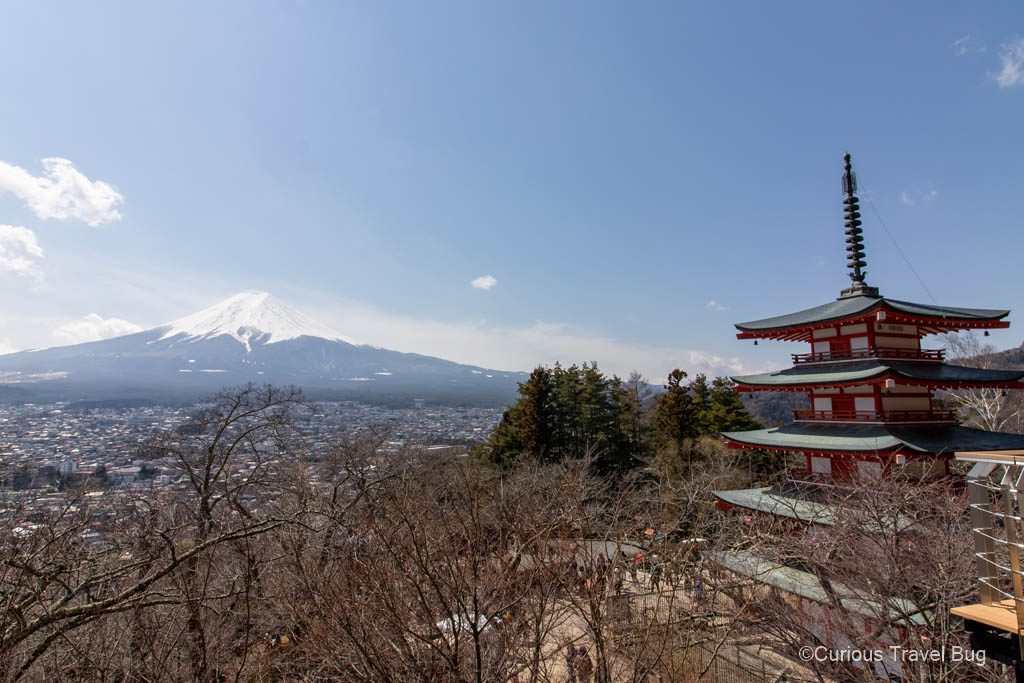
Back in Tokyo, I had dinner at Vegan Izakaya Masaka in Shibuya and I’m still dreaming of the delicious food there, especially the deep-fried maitake mushrooms and “chicken” karaage.
Day 12: Exploring Akihabara and Harajuku
Start your day exploring the streets of Akihabara. This area is known for electronics and anime. It’s also a good spot to try out one of the arcades and play some games. Check out Kanda Shrine while you are here, it has a beautiful lion fountain.
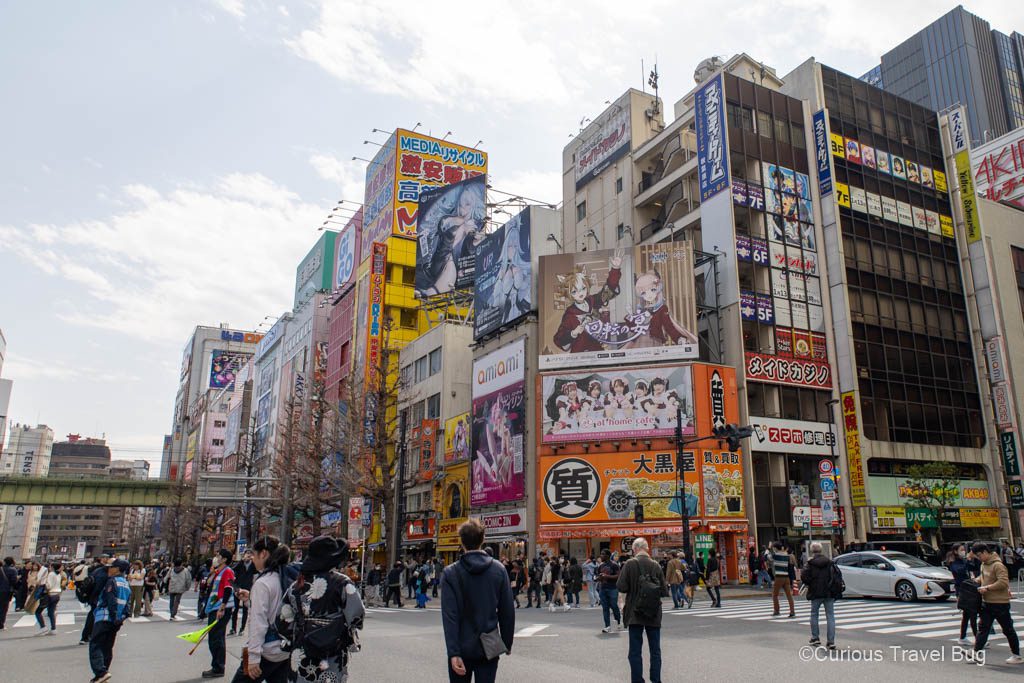
After Akihabara, take the train to Harajuku. Grab some souffle pancakes at Micasadeco & Cafe. It can be a bit of a wait but I promise these jiggly pancakes are worth it. If you don’t want to wait, Harajuku is known for its crepes. After lunch, visit Harajuku’s famous Takeshita Street. This street was packed with people when I visited. There are all kinds of quirky shops to discover.

Spend the afternoon in Meiji Jingu Shrine. This shrine is quite large and takes about an hour to explore, longer if you add on a visit to the gardens. The shrine is located adjacent to Yoyogi Park with many shady trees so it’s a great spot to get out of the hustle of Tokyo. After Meiji Jingu, I had dinner at the nearby Vegan Bistro Jangara, which was delicious.
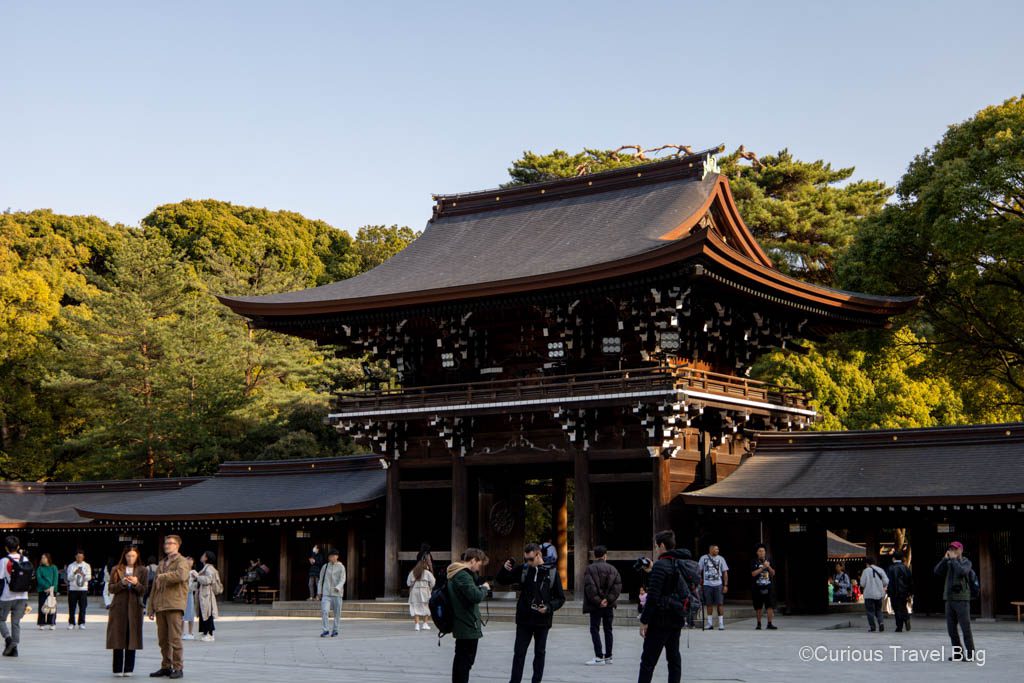
Day 13: TeamLab Borderless and Shibuya Sky
Today I booked both TeamLab Borderless and Shibuya Sky on the same day so I had the most flexibility around other days so I could choose the best day to see Mount Fuji without cloud cover.
Start your day by heading to TeamLab Borderless. This was one of my favourite activities I did in Tokyo. The displays are constantly changing and can respond to your presence. TeamLab Borderless is close to the Tokyo Tower so it’s worth taking a quick walk over to check it out.
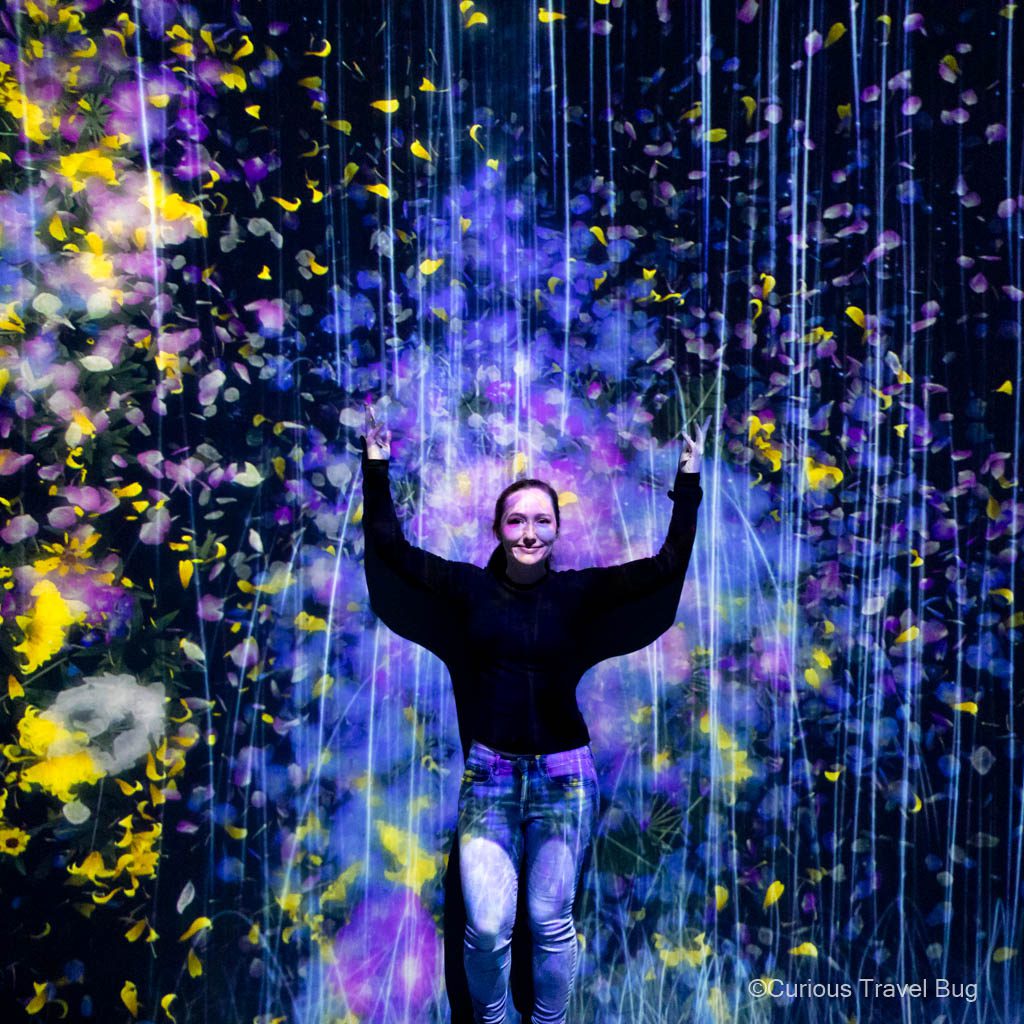
Take the metro to Shibuya and explore the Shibuya Scramble to see the Statue of Hachikō, the Akito dog known for his loyalty. If you have time before your entry to Shibuya Sky you can do some shopping in the area or have lunch. I ate at 2 foods Shibuya Loft and really enjoyed it.
Head up Shibuya Sky to catch the sunset. If you are lucky, you will catch a glimpse of Mount Fuji as the sun sets behind it. It’s a beautiful spot to see the lights of Tokyo and to appreciate the size of this mega-city.
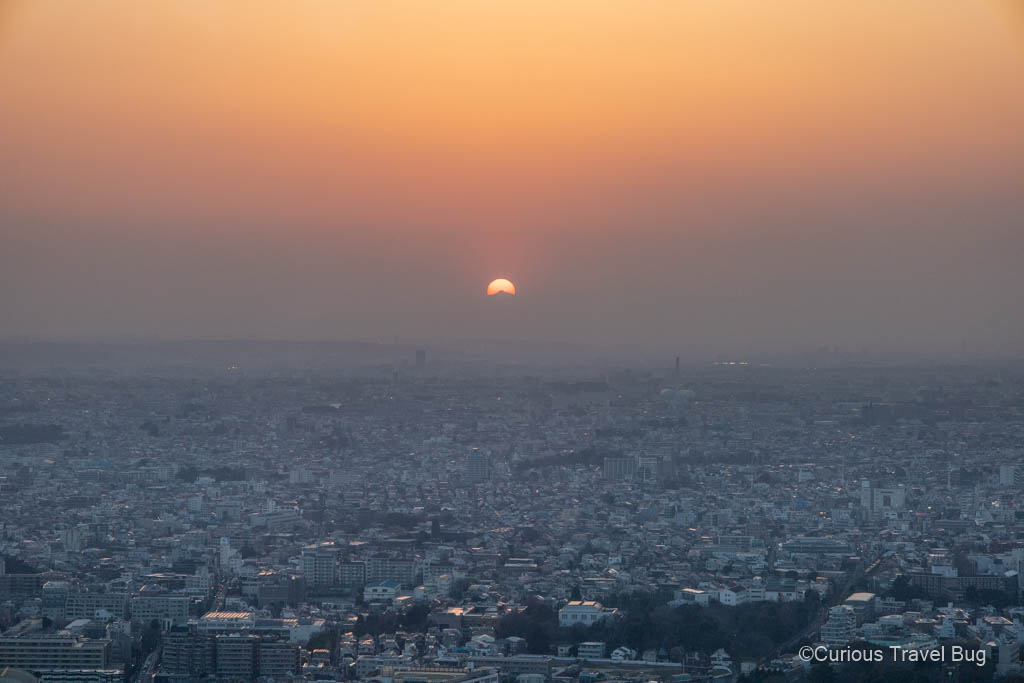
Uobei is a great place to try conveyor belt sushi for dinner. After you have time to go to Shinjuku to check out Shinjuku Golden Gai or the Godzilla statue.
Day 14: Day Trip to Kamakura
Kamakura is a great day trip from Tokyo and is only 1-1.5 hours on transit. I ended up feeling like a visit to Kamakura was almost like a mini-Kyoto.
In Kamakura, take a bus to your first stop of the day, Hokokuji Temple, known for its bamboo forest you can have matcha tea in.
Close to Hokokuji is an excellent coffee shop, Kameya Coffee&Roasters. Walk a short distance to Sugimoto Temple. Sugimoto Temple feels like you are stepping back in time and you can spot Mount Fuji from here.
Tsurugaoka Hachimangu Shrine is a must-visit spot in Kamakura. This beautiful Shinto shrine sits up on a hill and even has a small torii gates area that is reminiscent of Fushimi Inari in Kyoto.
Grab some lunch on your walk back to Kamakura Station. While eating my sandwich here I was interviewed by a Japanese television show about my thoughts on Kamakura so you may see me on Japanese TV eating an egg salad sandwich.
From Kamakura Station take the train to Hase Station. Walk to Hasedera Temple to see the Sanmon Gate, prayer wheel, and Benten Cave. Head to Kotoku-in Temple to see the large seated Buddha that Kamakura is known for before returning to Tokyo for dinner.

Day 15: Shinjuku and Flight Home
You’ve already spent time in Shinjuku at night but it’s worth checking out during the day for Shinjuku Gyoen National Garden. I had enough time on my flight day to spend a couple of hours in the garden. The sprawling gardens are fantastic and they change the map out seasonally so you know where to find blooms. When I visited the cherry blossoms were starting to bloom. The greenhouse there is also worth a visit.
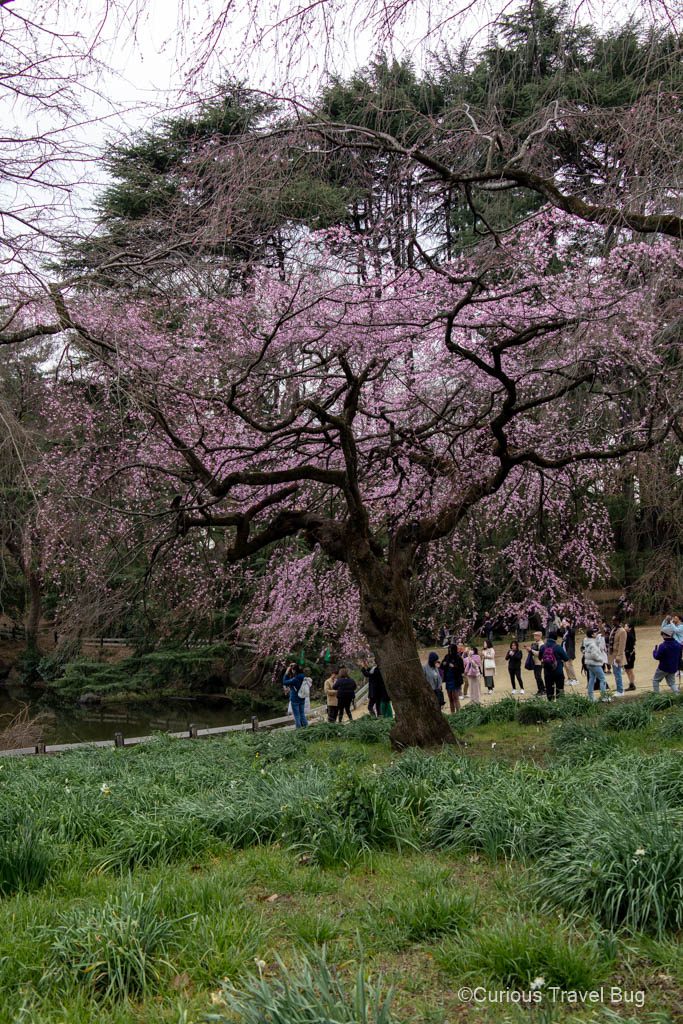
After exploring the garden, have some lunch in Shinjuku and then pick up your luggage and head to the airport. I had too much luggage to navigate transit with so I had my hotel book a taxi for me which was fast and a reasonable price, about 55k yen.
At the airport, make sure to mail your Wi-Fi device before going through security if you rented one.
Japan as a First-Time Visitor
Spending two weeks in Japan was not enough but this itinerary was a great start. I was already planning a second trip to Japan while I was still in Japan because beyond what’s explored here there are so many places to see on a second or third trip. I was happy with this as a first-time visitor itinerary as it did take in the top sights and allowed me to do some nice hiking and day trips.

